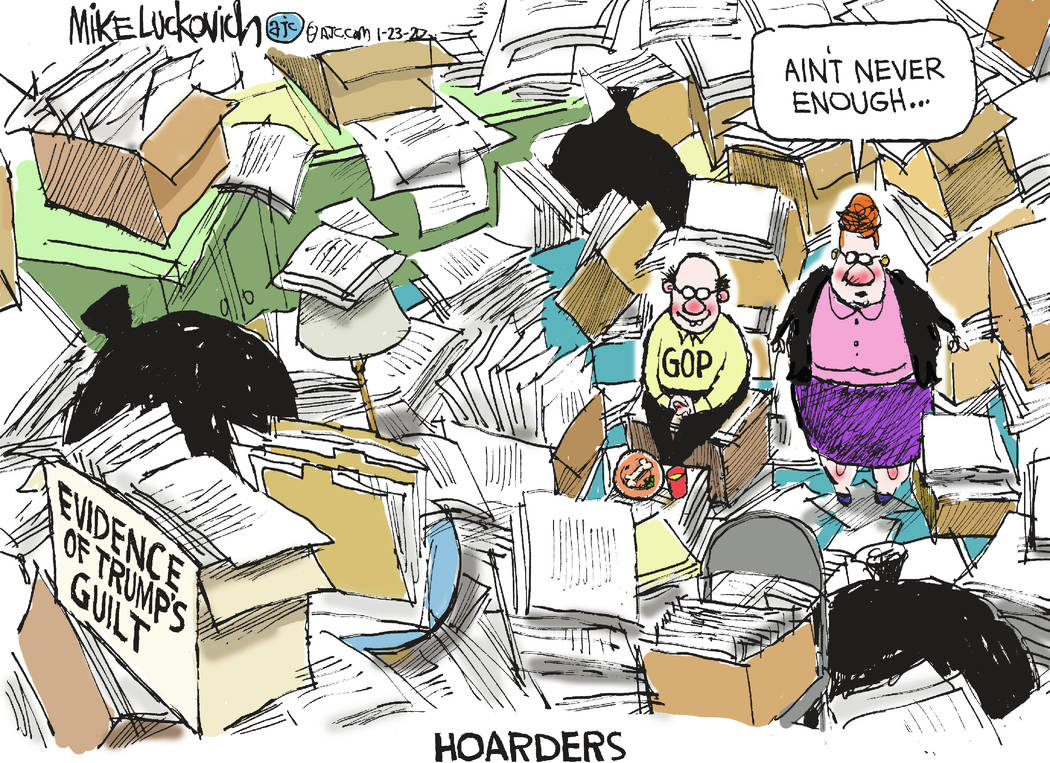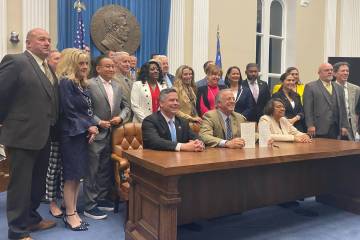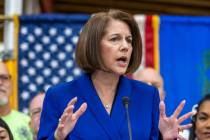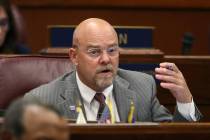STEVE SEBELIUS: Nevada’s 2020 caucus different from years past
In less than a month, Nevada voters will do their part to pick the next Democratic nominee.
Unlike first-in-the-nation Iowa, which has nearly 50 years of experience with caucusing, Nevada is relatively new to the spotlight: Our state’s caucus jumped to center stage in 2008, when former Sen. Harry Reid secured an early spot on the calendar.
Reid argued, with good reason, that a state in the West, with an ethnically diverse population, a strong organized labor presence and an electorate that more closely resembled America as a whole, deserved a shot to help winnow the presidential field.
The fact that it would be a boon for the Nevada Democratic Party was a happy coincidence for Reid, who benefited in his final bid for office in 2010 from the voter registration and turnout machine gains earned in Nevada’s early caucus.
Since 2008, Nevada has held three caucuses, although 2012’s was not competitive, as President Barack Obama was running for re-election and earned nearly 100 percent of the vote.
That smooth sailing was a marked contrast to 2016, when state Democrats — and the party nationally — were torn between former Secretary of State Hillary Clinton and Vermont Sen. Bernie Sanders. Allegations of bias and rigging dogged both state and national parties, and Sanders supporters didn’t all come home to Clinton in the end. The party in 2020 can ill-afford any disaffected defections if it hopes to prevail in November.
In order to heal those old wounds, the party has rolled out new transparency efforts to ensure this year will be different.
And, in some significant ways, it is.
First, there are more candidates on the caucus ballot — 11 in all — than the state has ever seen in its early caucus.
Second, there is early voting, from Feb. 15-18, at dozens of sites around the state. Nevadans are particularly fond of early voting in regular elections, and those unfamiliar with (or who object to) the regular caucus process will be able to avoid it entirely by casting an early vote.
It works like this: You mark a preference card with your top five choices, which are recorded at your neighborhood precinct on caucus day Feb. 22. If your first choice proves not to be viable, your vote will go to the next candidate on your list who is.
Early voting came in response to a request from the national Democratic Party to find ways to make voting and caucusing more accessible. That may be a reason — along with the surfeit of candidates — that participation in the 2020 caucus could hit big numbers, maybe even as large as that first 2008 early caucus, in which nearly 116,000 people participated.
As in past years, the division between the centrist candidates (think Joe Biden, Pete Buttigieg and Amy Klobuchar) and the liberal candidates (think Bernie Sanders and Elizabeth Warren) will offer Nevada Democrats a range of choices.
One issue that marred the caucus in the past — a 2008 lawsuit over caucus locations at Strip casinos — is moot. Everybody accepts that voting will take place in casinos, which will aid voting by members of the Culinary Local 226. The union has held town halls, in fact, to hear from most of the candidates in the field, allowing workers to ask questions directly.
Voting in Iowa and New Hampshire may influence Nevada’s vote in significant ways. First, candidates who fail to do well in those early states may drop out between New Hampshire’s Feb. 11 primary and Nevada’s caucus, limiting our choices. Second, Nevada’s culture deeply favors winners and deeply abjures losers. Voters here may look to the early two states to see if anyone is starting to separate themselves from the pack.
Once in the caucus rooms, however, Nevada voters need not vote strategically, at least on the first alignment. That’s the time to stand with the candidate you like the best, based on the issues. That’s a time to vote with the heart. If your choice doesn’t garner the required 15 percent minimum to be considered viable in your precinct, a second and final alignment will allow you to vote pragmatically, with your head, siding with the candidate who you ultimately think should be the nominee, even if that person was not your first choice.
Finally, Nevada’s caucus turnout will be driven by one name that won’t be on the ballot, a person who Democrats may ultimately turn to as their best reason yet to turn out on Election Day: President Donald Trump.
Contact Steve Sebelius at SSebelius@reviewjournal.com or 702-383-0253. Follow @SteveSebelius on Twitter.



















